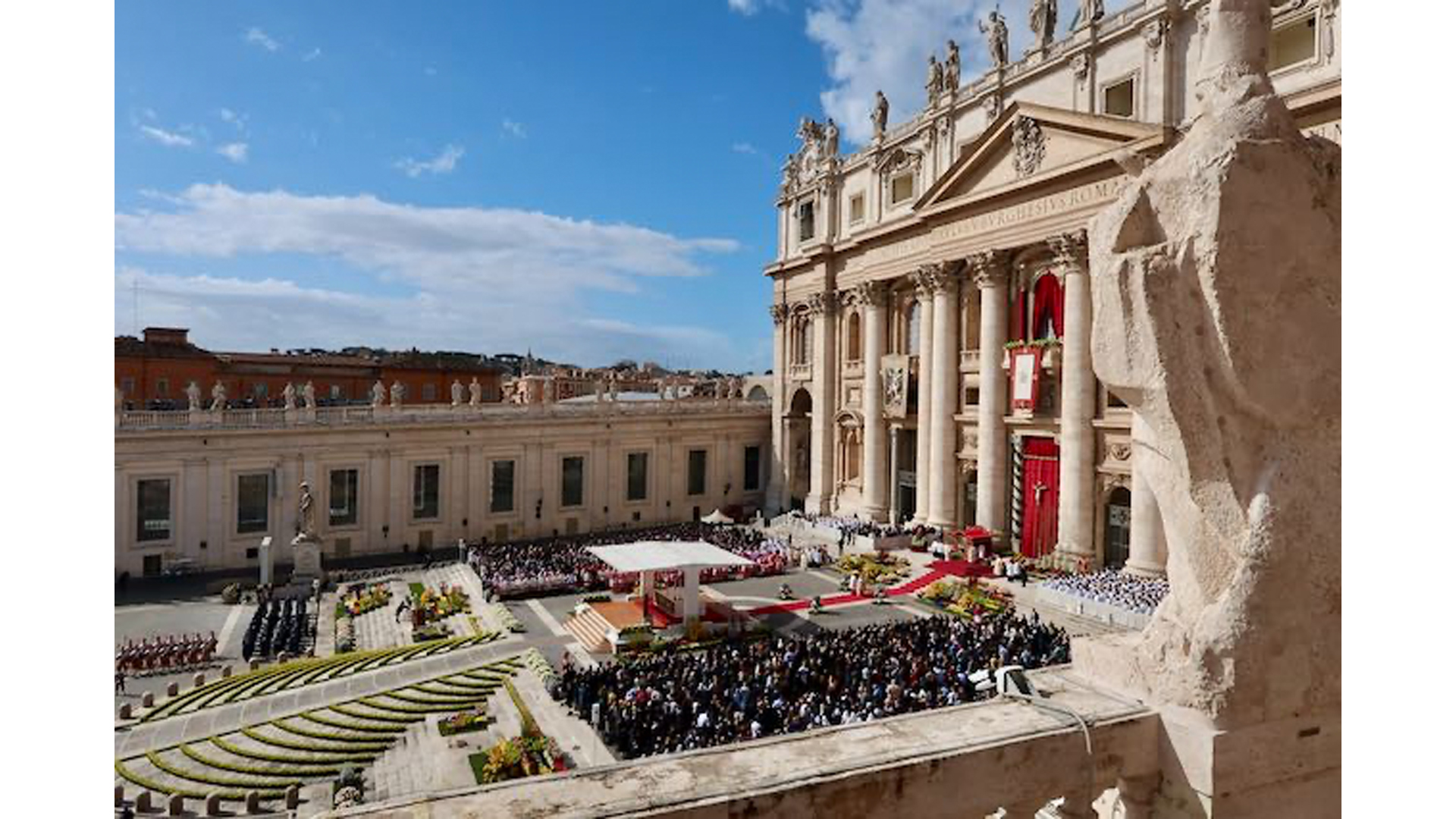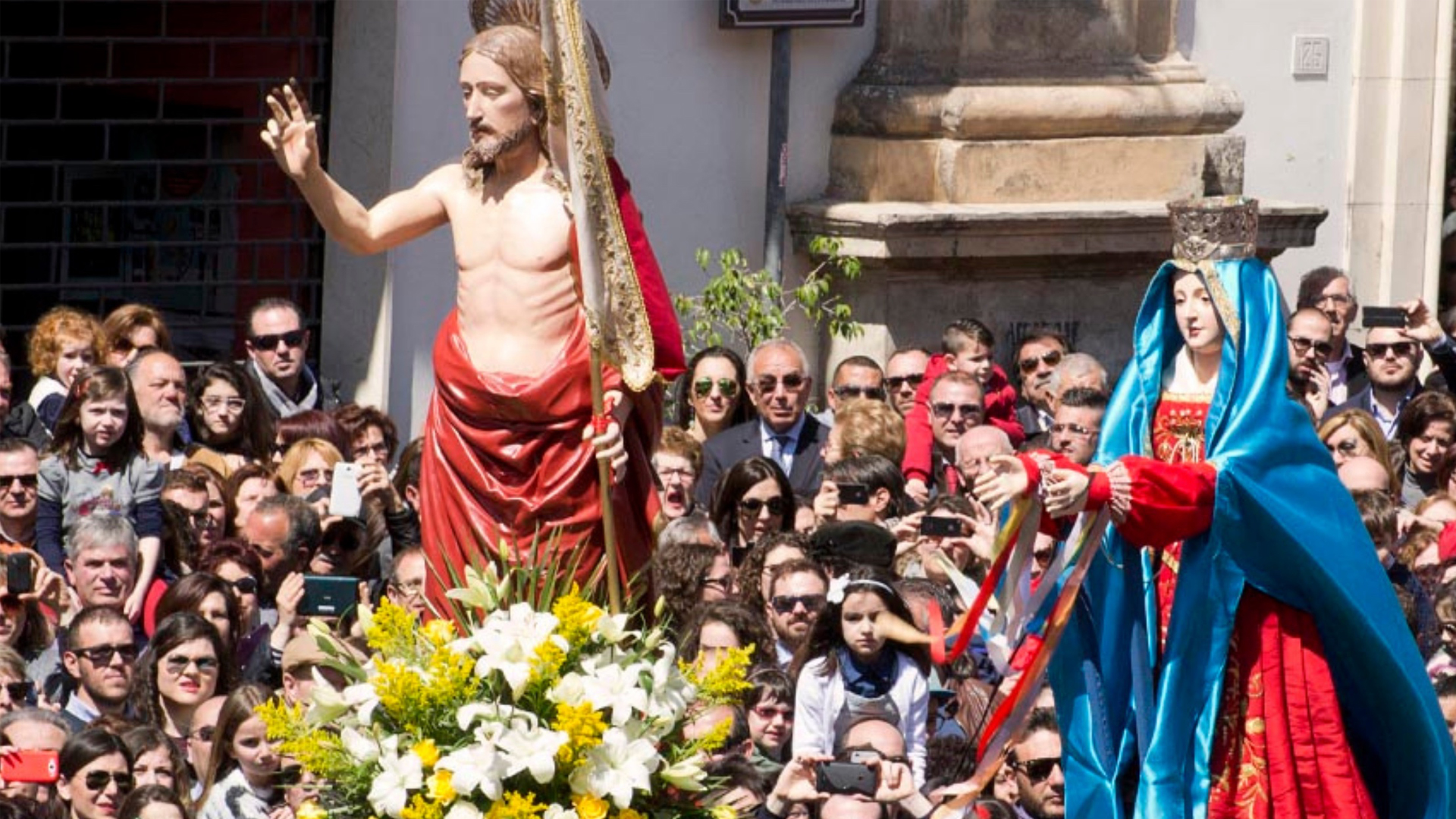Easter is Italy's most religious holiday after Christmas, and as such is a time to eat, enjoy time with family, and reflect on cultural and religious values. The holiday is celebrated in Italy with a week of religious processions and rituals, followed by a feast on Easter Sunday and Pasquetta, meaning Little Easter, on Easter Monday. These processions, spread out across the country, range from solemn religious rituals to more lively events rooted in celebration and folklore.
Take a look below at some of the country’s most unique Easter traditions, from traditional religious masses to competitions involving hundreds of eggs.
Rome

(Photo Credit: Romewise)
Watching the Pope at Saint Peter’s Basilica on Easter Sunday is not only a traditional Roman celebration, but also an Italian one. Observing the pope lead one of the world’s most-attended masses from his balcony overlooking Saint Peter’s Square, in person or through a television screen, is a staple of an Italian Easter. The pope always ends the mass with the words “Urbi et Orbi,” meaning “for the city and the world,” a message that blesses all those present and urges them to care for both the city of Rome and the entire world.
Florence

(Photo Credit: tuscanynowandmore.com)
The Scoppio del Carro (the exploding carriage) is a unique Florentine Easter tradition that dates back to the First Crusade. The nearly 400-year-old spectacle involves an ornate cart loaded with fireworks that weaves through the city, following a route from Piazzale del Prato to Florence’s Duomo, where it is connected via a cable. A rocket shaped like a dove with an olive branch in its mouth is launched down the cable toward the cart, causing it to explode into a flurry of colors upon contact. Legend has it that if the ritual was successful, it heralded a good harvest season.
Tredozio

(Photo Credit: forlitoday.it)
The town of Tredozio, located in the Emilia-Romagna region of Italy, holds an event consisting of competitions, games, and parades, all of which revolve around eggs. The highlight is the Palio dell’uovo, which takes place on Pasquetta (Easter Monday), when men from the neighborhood's four districts – Borgo, Piazza, Casone, and Nuovo – compete for the conquest of the silver egg. The battle takes place in the bed of the Tramazzo river, and the historic center of the city is adorned with the colors of the neighborhood’s four districts: red, green, blue, and white. Another competition is the “battaglia delle uova crude,” (the battle of the raw egg) in which some 600 eggs are thrown in the air.
Bormio

(Photo Credit: bormio.eu)
On Easter Sunday, the people of the small town in the northern Lombardy region of Italy, dress up in traditional clothes and take part in the Pasquali parade, which dates back to the 17th century. Pasquali are carnival floats designed with religious themes that are carried around the town on men’s shoulders, while women, children, and the elderly carry flowers and smaller crafts. The Pasquali are ranked by a panel of local judges based on their religious meaning and quality of workmanship.
Asia London Palomba
Asia London Palomba is a trilingual freelance journalist from Rome, Italy. In the past, her work on culture, travel, and history has been published in The Boston Globe, Atlas Obscura, The Christian Science Monitor, and Grub Street, New York Magazine's food section. In her free time, Asia enjoys traveling home to Italy to spend time with family and friends, drinking Hugo Spritzes, and making her nonna's homemade cavatelli.

